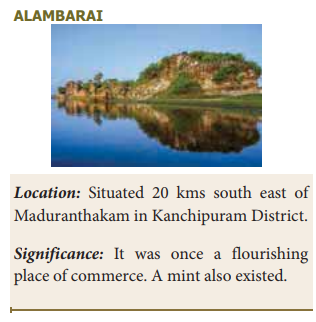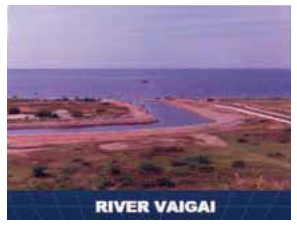Chapter: 11th Commerce : Chapter 1 : Historical Background of Commerce in the Sub-Continent
Historical Background of Commerce in the Sub-Continent
HISTORICAL
BACKGROUND OF COMMERCE IN THE SUB-CONTINENT
Introduction
Commerce has been in
practice since time immemorial. It is
part and parcel of human life,
whether it is a king or a common man. It emerged
as an economic activity, mainly as
barter system which means exchange of goods for
goods. It was so comfortable for neighbouring villages, states, even countries
to practice barter in the absence of a medium of exchange in the form of money today. However, the concept of money
occupied its predominance when scarce resources were to be either
exchanged between parties in need or countries in demand and
over a period of time barter economy took the dimension of monetary economy where money was used as a medium
of exchange of goods and services.
The growth of civilization
witnessed the rise and fall of many dynasties,
but still the course of commerce
activities continued further and further, not only within a country, but also between nations of the
world. However Tamil Nadu
remained to be the founder of
trade and commerce both within and outside as evidenced in various ancient
literatures like Sangam.
The whole of commerce
activity emerged from barter system into a multi dimensional and multifaceted scientific system consisting of
courses like Monetary system, Mail-order business, Hire purchase system, Instalment purchase
system and so on. In a technology
driven society today again the course of commerce activities is heading for a cashless system through e-commerce,
which means business activities enabled
through electronic modes like Online trading, Mobile banking and e-marketing.
In this context, it is all the more
important for any student to
learn the historical background of the growth and development of commerce in the country in general and in Tamil Nadu in
particular. An attempt is
made in this chapter to explain such a history so as to ascertain the magnitude
of commerce today.
The earliest trading
population of India was
Indus valley people, who used the word ‘trade’.
The word vaniyam or vanipam
would have had a Dravidian origin. The early
Tamils produced their products and
goods in their lands and bartered their surplus and that is how trade came into
existence. The word ‘Vanigam’ has been widely used in sangam
literature like Purananuru and Thirukkural. The Tamil – Brahmi
inscriptions from Alagarmalai, Pugalur, Mangulam
and Sri Lanka illustrate the fact that trade in gold, oil, plough, cloth
etc.was conducted during the early age.
Trade in Sangam period was both internal and external but it was conducted by means of barter (pandamattru) Trade was one of the major means of linking various regions in the medieval period. Sangam work refers to great traders, their caravans, security force, markets, marts and guilds of such great traders. The important articles which the then hilly tribes offered to their neighbours in exchange were honey and roots and fruits while pastoral people offered cattle, milk and milk products. Cattle served as money for sometimes during the same period. Most of the inland trade was done in salt as a medium of exchange under barter mode. Paddy too served as a medium of exchange for a certain period. There was dependence and interdependence among the people in matters of trade and commerce. Barter system cemented their relationship internally while coins were used later for the purpose of exchange of goods in external trade.
Trade and Traders in The Pandiya Dynasty
Trade
and commerce was so common to Pandiya Dynasty. Information
collected from the diaries of foreign travellers, voyagers, mariners and adventurers of the ancient world
highlighted the prosperity of trade in the Pandiya country. The Hebrew and
Latin literature, archaeological remains in Aden, Alexandria, Java, Sumatra and even China add support
to the fact of existence of trade network in the Pandiya country. Trade in
copper, cloth, salt, flower, sandal wood, fish, paddy, cereals, pearls, etc flourished
during their period. The place where the goods were sold was called ‘Angadi’ in their period. Day
market was called as Nalangadi while the night market was called as Allangadi
according to Saint Poet Ilango in Silapathigaram, Madurai– Kanchi. He described
Madurai as iruperu neyamath meaning sleepless city due to round the clock business
activities.
Coastal Trade in Ancient Tamil Nadu
Big cities like Poompuhar had the ‘Maruvurappakam’ (inland town) and ‘Pattinapakkam’ (coastal Town), had market and bazaars where many merchants met one another for the purpose of selling or buying different kinds of commodities and food stuff. Port towns like Tondi, Korkai, Puhar and Muziri were always seen as busy with marts and markets with activities related to imports and exports. In such a brisk trade, people of the coastal region, engaged themselves in coastal trade and developed their intercontinental trade contacts. They were engaged in different kinds of fishing pearls, and conches and produced salts and built ships. Boats like ‘Padagu’, ‘Thimil’, ‘Thoni’, ‘Ambu’ ‘Odampunai’ etc… were used to cross rivers for domestic trade while Kalam, Marakalam, Vangam, Navai etc.. were used for crossing oceans for foreign trade.
Role of the Government during Ancient Tamil Nadu
Foreigners who transacted
business were known as Yavanars. Arabs who traded with Tamil were called
‘Jonagar’. Pattinappalai praised Kaveripumpattinam as a city where various
foreigners of high civilization speaking different languages assembled to
transact business with the support of the then Kingdom.
The role of the State in trade related to two aspects namely adequate infrastructure to sustain the trade and administrative machinery for taxation. During the Sangam period, the main trade routes were passing through thick forests over western ghats. The State protected the merchant caravans on these trade routes from robbers and wildlife.

Main roads known as
Peruvali were built for surface
transportation. Besides state expanded infrastructure for shipping such as ports, lighthouse, warehouse etc.. to promote
overseas trade. Many such
ports were developed during the Sangam period. Kaveripumpattinam was the chief port of the Kingdom
of Cholas while
Nagapattinam, Marakannam, Arikamedu etc. were other small ports
on east coast.
Similarly Pandiyas developed Korkai, Saliyur, Kayal,
Marungaur pattinam and Kumari for foreign trade. The
State Govertments installed check posts to collect
customs along the highways and the ports.
Contribution of ‘Kautilya’ to Trade
‘’Kautilya’s Arthasastra” describes economy in Mauriyan time. This brought out history of marketing practised some 2000 years ago. According to Kautilya, trade in Medieval India was centralized. Since the commodities produced could not be sold in the location of production, the state designated certain places for selling the commodities. It levied duties on goods brought into the city and could be sold after payment of duty. Only certain merchants were authorized to engage in trade to sell at prices fixed by the chief controllers of State Trading.
The profit
margin allowed for traders ranged
between 5 per cent for
indigenous goods and 10 per cent for
imported goods. Import of foreign goods
was encouraged to enhance
the standard of living of people.
Kautilya gave importance for the State in relation to treasury, taxation, industry, commerce,
agriculture and conservation
of natural resources. Arthasathra focused on creation of wealth as the means to

He advocated maintenance of perfect balance between State management
and people’s welfare through trading activities.
Commerce and Trade in North India
India was prosperous even during the medieval period from 12th to 16th centuries despite political upheavals. Balban was the first sultan who paved the way in the India was prosperous even during the medieval period from 12th to 16th centuries despite political upheavals. Balban was the first sultan who paved the way in the dense forest and helped traders and their commercial caravans to move from one market place to others.
Alauddin Khilji brought the price to a very low ebb. He encouraged
import of foreign goods from
Persia and subsidised the goods.
Arabs were dominant players in India’s
foreign trade. They never discouraged Indian
traders like Tamils, Gujaratis, etc.. The Trade between
the coastal ports were in the hands
and Marwaris
and Gujiratis. The
overland trade with central and west Asia was in the hands of Multanis who were
Hindus and Khurasanis who were Afghans, Iranians and so on. During
Sultanate period, trade flourished
due to the establishment of currency
system based on silver and
copper. Moorish traveller described the
teeming market of big cities in
the Gangetic plains, Malwar, Gujarat
and South India. The important trade centres were Delhi, Mumbai, Ahmedabad, Sonar,
Sonargoon, Jaunpur, Lahore and so on.
The burgeoning foreign trade led to
the development of market place in the towns
and villages. India’s handicraft commanded
a good foreign market. India imported horses, dry fruits, precious
stones, glassware, high grade textiles, raw
silk, corals, scented oil, velvets,
etc.. from Kabul, Arabia, Europe, West Asia and China. Indian products were
exported to East Africa, Malaya, China and
Far East. Trade was conducted through overland roots with Afghanistan, Central Asia and Persia India conducted foreign trade via land route
with Quetta, Khyber pass, Iraq and Bukhara. The
traders of Malabar, Gujarat
and foreign settlers in
the
ports of Calicut, Khumbat and Mangalore controlled a
major business sector in port cities.

Trade with Rome, China and Europe
Roman and Greek traders
frequented the ancient Tamil country
and forged trade relationship with
ancient Kings of Pandiya, Chola and Chera dynasties. Cholas had a strong
trading relationship with Chinese Song Dynasty.
The cholas conquered the Sri Vijaya Empire
of Indonesia and Malaysia to
secure a sea trading route to China.
During the 16th and 18th
centuries, India’s overseas trade
expanded due to trading with European companies. The discovery of new all - sea routes from Europe to India via Cape of Good Hope by Vascoda Gama had far –
reaching impact on the civilized world.
The arrival of
Portuguese in India was followed
by the advent of other European communities. India’s
maritime trade was a monopolized one over Europeans and at one stage the
global trade share of India was 55 per cent which is just 2 per cent in 21st century. The European
merchants who came to India were not only
individual merchants but also represented their respective governments. They
gained a strong foothold in India’s maritime
trade by virtue of their strong naval power. In course of time their commercial
motives turned into territorial ambition like the East India Company which became the British
Empire here.
Textiles and ship
building earned name and fame in the 17th and 18th centuries. Britishers
gradually abolished Princely order in the Indian territories. Thus the demand for Indian goods declined during the
British rule. Britishers put in
place policies prohibiting the
export of some of the popular goods like Indian textile goods, handicrafts, to Great Britain.
Between early 1600 and mid – 19th century, the
British East India company led
establishment and expansion of foreign trade all over Asia. Although initial
interest of the East India Company was aimed at reaping
profits, their single minded focus was on
establishing a trade, monopoly throughout Asia Pacific made them heralding agent
of British Colonial Imperialism.
Related Topics